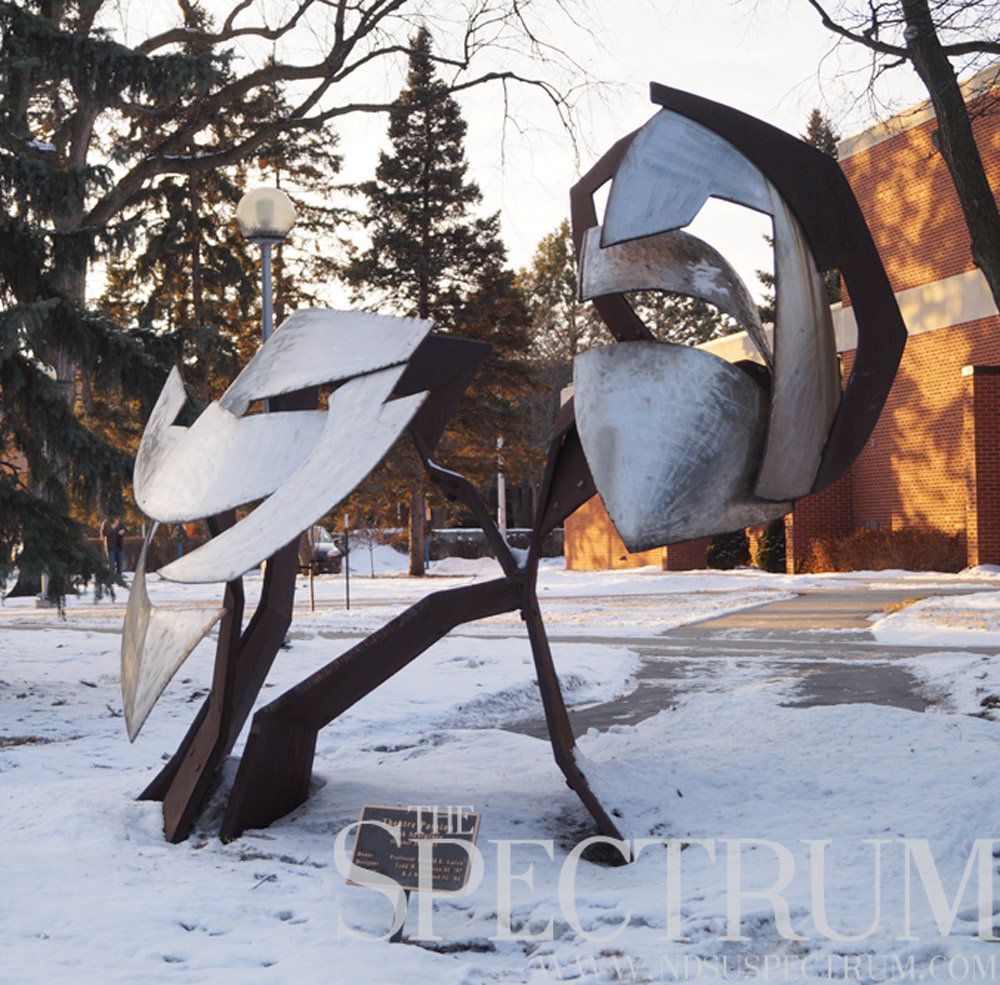
Ask David Swenson about North Dakota State’s Public Art on Campus program, and he’ll likely be surprised.
“It doesn’t get much attention anymore,” the associate professor of ceramics and sculpture said.
NDSU initiated its Public Art on Campus program in fall 2001, beginning with “The Olive,” a sculpture installed outside the NDSU Library.
Other pieces to come included information map centers decorated with wheat stalks and the theater mask in front of Askanase Hall.
But with the acquisition of Renaissance Hall and visual arts moving downtown in 2004, Swenson said the program’s focus evolved.
Thomas Riley, former dean of the college of arts, humanities and social sciences, said the program’s mission is still around, however.
“It was kind of a success but it was a start,” Riley, who retired in 2014, said. “One of the things that has to be recognized … is that public art has to be essentially a part of public places. And it isn’t.”
Swenson said the program was meant to be an opportunity for students to showcase their talents.
“There wasn’t much going on in terms of sculptures and I just wanted an opportunity for students to make pieces,” he said.
Riley said the space and funds for art installations on campus was “discretionary.” If a facility or college approved of a piece to be installed outside, they would provide a platform and “work it into their budgets.”
“Pouring a few yards of concrete was not a lot,” he said, adding, “If there was money that the facilities couldn’t squeeze out, I would try to make it available.”
Both Riley and Swenson highlighted the importance of public art in terms of financial, spiritual and architectural value.
“It’s just important to have around,” Swenson said.
As for the pieces on NDSU’s campus, neither Swenson nor Riley could recall when or what the last installation was. The wheat-topped information maps were removed and replaced with updated campus maps in summer 2015.
Many artworks by students are on display in conference rooms, classrooms and offices, Riley said, including some lithographs in Minard 410, “a beautiful conference room.”
Moreover, Riley highlighted that though the Public Art on Campus program wasn’t a full success, he’s “hoping the seeds are there for them to grow.”
North Dakota lacks public art, he said, whereas Minnesota appropriates money to install art inside of or in front of public buildings to be constructed.
“That just doesn’t happen in North Dakota,” Riley said. “And that’s one of the things I hoped would begin with this.”
Riley’s hopes did take fruit in Fargo’s Arts and Culture Commission, the nine-member board formed in late 2014 to manage and encourage the placement of public art in Fargo.
Commissioner Dayna Del Val, also executive director of The Arts Partnership, said she “had no idea there was” a public art program at NDSU, adding she found the program “fascinating.”
Del Val said the commission has been looking at funding for publicly funded art projects and a repair budget for vandalized and damaged arts.
“I think there’s a lot of education to be done around how we treat public art and how we manage it,” she said.